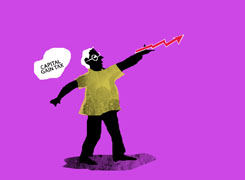Im 27M unmarried, I earn 72k per month, I have investment of 1.3lacs Pf, 1.7lacs in Stocks and homeless 7lakhs my expenes monthly 25k including all emi's, may I know how much corpus should I accumulated to get a financial freedom and how long it might take
Ans: It's fantastic that you are thinking about financial freedom at such a young age. At 27, you have a long investment horizon, which is a significant advantage. Let's discuss a strategy to help you achieve financial freedom and how long it might take based on your current situation and goals.
Current Financial Situation
You are 27 years old and earn Rs. 72,000 per month. Your monthly expenses, including EMIs, are Rs. 25,000.
Your current investments include Rs. 1.3 lakhs in PF and Rs. 1.7 lakhs in stocks. You also have Rs. 7 lakhs in savings.
With these details in mind, we can create a plan to help you achieve financial freedom.
Defining Financial Freedom
Setting Goals
Financial freedom means different things to different people. For some, it means retiring early. For others, it means not having to worry about money.
Start by defining what financial freedom means to you. Think about the lifestyle you want and the expenses you might have in the future.
Estimating Corpus
A common approach is to aim for a corpus that can generate enough passive income to cover your monthly expenses.
Assuming you need Rs. 50,000 per month to live comfortably, you would need a corpus that generates this amount without depleting your principal.
Rule of 25
A popular rule of thumb is to save 25 times your annual expenses. This means if you need Rs. 50,000 per month, you need Rs. 15 lakhs per year.
So, you would aim for a corpus of Rs. 3.75 crores (Rs. 15 lakhs * 25).
Investment Strategy
Mutual Funds
Mutual funds are an excellent vehicle for wealth creation. They offer diversification, professional management, and the potential for high returns.
Equity Mutual Funds: These are suitable for long-term goals like financial freedom. They invest in stocks and have the potential for high returns.
Balanced Funds: These funds invest in a mix of equity and debt, providing a balance between risk and return.
Debt Mutual Funds: These funds are less risky and provide stable returns. They are suitable for capital preservation as you approach your financial freedom goal.
Systematic Investment Plan (SIP)
Start a SIP to invest regularly. This will help you accumulate wealth over time through the power of compounding.
Given your ability to save Rs. 47,000 per month (Rs. 72,000 income - Rs. 25,000 expenses), you can start a significant SIP.
Diversification
Diversify your investments across different mutual fund categories to manage risk. This approach will help you weather market volatility.
Regularly review your portfolio and adjust based on market conditions and your financial goals.
Emergency Fund
Before diving into investments, ensure you have an emergency fund. This fund should cover at least 6 months of your monthly expenses.
This will act as a financial cushion in case of unforeseen events. Keep this fund in a liquid savings account or a liquid mutual fund.
Insurance Planning
Ensure you have adequate life and health insurance coverage. This will protect you and your family in case of any unfortunate events.
Life Insurance: A term plan is recommended. It provides a high cover at a low premium.
Health Insurance: Ensure you have a comprehensive health insurance policy.
Power of Compounding
Compounding is the process where the earnings on your investment generate their own earnings. Over time, this can lead to exponential growth of your investment.
By starting early and investing regularly, you can take full advantage of compounding to build a significant corpus for your financial freedom.
Regular Review and Adjustments
Financial planning is not a one-time activity. Regularly review your portfolio and make adjustments as needed.
Keep track of your financial goals and ensure you are on track to achieve them.
Final Insights
You have a solid foundation with a good income and savings potential. With a clear strategy and disciplined approach, you can achieve your financial freedom goals.
Start by setting clear goals for your financial freedom. Invest systematically through SIPs in mutual funds, diversifying across different categories.
Ensure you have an emergency fund and adequate insurance coverage. Regularly review your investments and make adjustments as needed.
You are on the right track to achieve financial freedom. With careful planning and disciplined investing, you can secure a bright financial future.
Best Regards,
K. Ramalingam, MBA, CFP,
Chief Financial Planner,
www.holisticinvestment.in
























